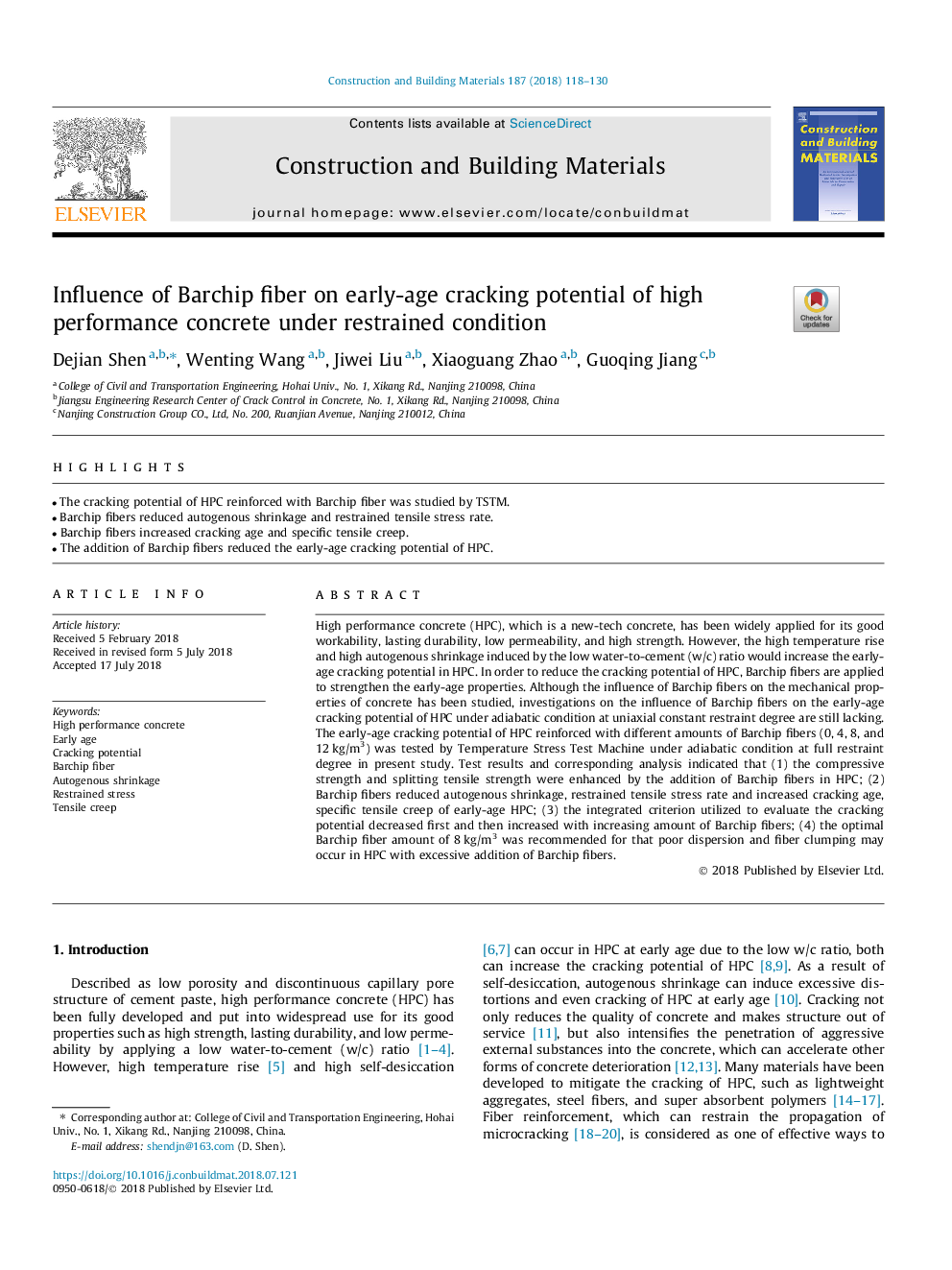| Article ID | Journal | Published Year | Pages | File Type |
|---|---|---|---|---|
| 6711242 | Construction and Building Materials | 2018 | 13 Pages |
Abstract
High performance concrete (HPC), which is a new-tech concrete, has been widely applied for its good workability, lasting durability, low permeability, and high strength. However, the high temperature rise and high autogenous shrinkage induced by the low water-to-cement (w/c) ratio would increase the early-age cracking potential in HPC. In order to reduce the cracking potential of HPC, Barchip fibers are applied to strengthen the early-age properties. Although the influence of Barchip fibers on the mechanical properties of concrete has been studied, investigations on the influence of Barchip fibers on the early-age cracking potential of HPC under adiabatic condition at uniaxial constant restraint degree are still lacking. The early-age cracking potential of HPC reinforced with different amounts of Barchip fibers (0, 4, 8, and 12â¯kg/m3) was tested by Temperature Stress Test Machine under adiabatic condition at full restraint degree in present study. Test results and corresponding analysis indicated that (1) the compressive strength and splitting tensile strength were enhanced by the addition of Barchip fibers in HPC; (2) Barchip fibers reduced autogenous shrinkage, restrained tensile stress rate and increased cracking age, specific tensile creep of early-age HPC; (3) the integrated criterion utilized to evaluate the cracking potential decreased first and then increased with increasing amount of Barchip fibers; (4) the optimal Barchip fiber amount of 8â¯kg/m3 was recommended for that poor dispersion and fiber clumping may occur in HPC with excessive addition of Barchip fibers.
Keywords
Related Topics
Physical Sciences and Engineering
Engineering
Civil and Structural Engineering
Authors
Dejian Shen, Wenting Wang, Jiwei Liu, Xiaoguang Zhao, Guoqing Jiang,
